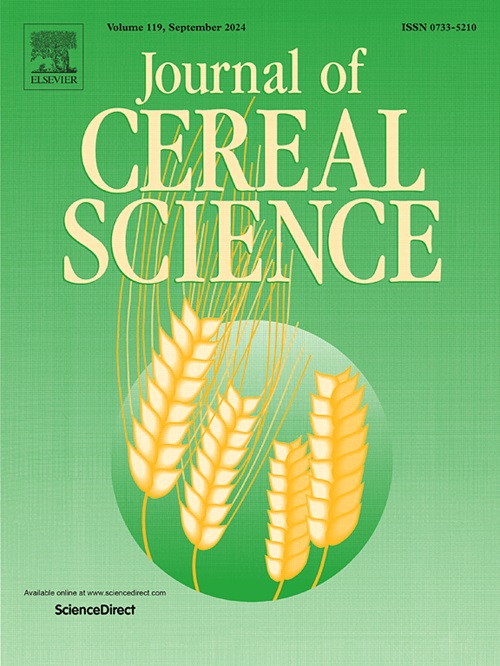通过对角电泳检测二硫键,分析小麦谷蛋白的结构
IF 3.9
2区 农林科学
Q2 FOOD SCIENCE & TECHNOLOGY
引用次数: 0
摘要
本文章由计算机程序翻译,如有差异,请以英文原文为准。

Structural analysis of wheat glutenins by diagonal electrophoresis for disulfide bond detection
Gluten is a wheat-specific protein aggregate that strongly affects dough properties and mainly comprises glutenins and gliadins. Glutenins form large complexes through intermolecular disulfide bonds, which have not been fully structurally characterized. Herein, the structures of glutenins in four wheat cultivars were analyzed via CNBr digestion, which resulted in cleavage at methionine residues to afford peptides with molecular weights close to those of intact high-molecular-weight glutenin subunits (HMW-GSs). The diagonal electrophoresis of these peptides enabled the partial visualization of the disulfide bond–connected glutenin structure. This structure was formed before the mixing of flour and water and was present in all cultivars, with its composition depending on the cultivar-specific glutenin genotype. The constituent proteins were identified as HMW-GSs, low-molecular-weight glutenin subunits, α-gliadin, and serpin using liquid chromatography-tandem mass spectrometry. These results demonstrated that HMW-GSs formed a complex with disulfide bonds, even though the cysteines used for head-to-tail bonding were cleaved by CNBr. Until now, the HMW-GSs in glutenins were thought to be linearly disulfide-bonded via head-to-tail bonds. However, our results suggest that the cysteines in the central part are also disulfide-bonded, forming a branched structure.
求助全文
通过发布文献求助,成功后即可免费获取论文全文。
去求助
来源期刊

Journal of Cereal Science
工程技术-食品科技
CiteScore
7.80
自引率
2.60%
发文量
163
审稿时长
38 days
期刊介绍:
The Journal of Cereal Science was established in 1983 to provide an International forum for the publication of original research papers of high standing covering all aspects of cereal science related to the functional and nutritional quality of cereal grains (true cereals - members of the Poaceae family and starchy pseudocereals - members of the Amaranthaceae, Chenopodiaceae and Polygonaceae families) and their products, in relation to the cereals used. The journal also publishes concise and critical review articles appraising the status and future directions of specific areas of cereal science and short communications that present news of important advances in research. The journal aims at topicality and at providing comprehensive coverage of progress in the field.
 求助内容:
求助内容: 应助结果提醒方式:
应助结果提醒方式:


